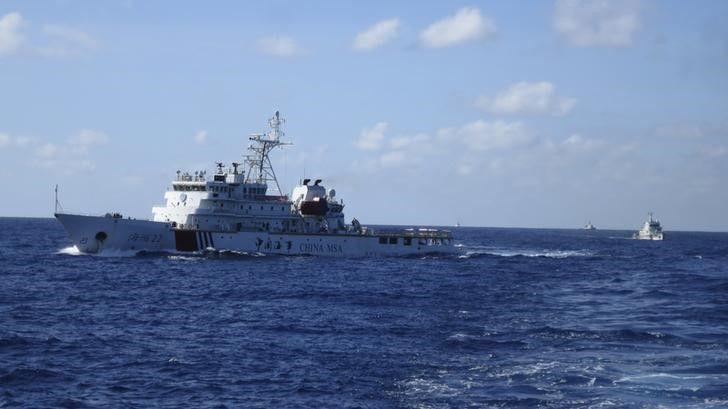China, Vietnam Coast Guard Ships Face Off Near Indian Oil Block In South China Sea
China has deployed its coast guard ships near an oil block in the Vietnamese EEZ (Exclusive Economic Zone) where India’s state-run Oil and Natural Gas Corporation (ONGC) has been carrying out oil exploration in the South China Sea.
New Delhi-based ONGC Videsh shares interests in the oil block along with Russia's Rosneft, a Moscow-based petroleum refining company. The news of the new faceoff between Chinese and Vietnamese ships was reported by Sputnik International, a Moscow based online news site.
An unnamed Vietnamese government source said, "This is the second intrusion by the Chinese this year, and it began on Aug. 13 at 1500 hours local time.” The source added that the latest intrusion involved six coast guard ships, 10 fishing ships and two service ships along with an H6 bomber, fighter aircraft and mid-air refuelers that had been spotted flying over the economic zone.
China’s bullying actions are not going unnoticed by the United States, currently locked in an intense trade war with the communist nation. A Philippine Star article quoted John Bolton, President Donald Trump’s national security advisor, as saying in a tweet: “China’s recent escalation of efforts to intimidate others out of developing resources in the South China Sea is disturbing. The United States stands firmly with those who oppose coercive behavior and bullying tactics which threaten regional peace and security.”
Beijing has upset several other countries with EEZs in the South China Sea, including Brunei, Malaysia and the Philippines. With India and possibly Russia now joining the list, it appears that Sino-Indian relations, always a bit tense, will not improve in the coming months. China and India together account for about 37 percent of the world’s population creating enormous competition for the resources, including oil, natural gas and fishing in the South China Sea.
Because the strife is happening in the waters of the Vietnamese EEZ, they will need to assess their legal options against their northern neighbor and consider appealing to the global community through the United Nations Security Council.

China continues to claim sovereignty over the bulk of the South China Sea based on the “Nine-Dash line,” a historical demarcation line that encroaches on several EEZs. Vietnam has informed the Indian and Russian governments of the development and continues to ponder its next actions.
India’s Ministry of External Affairs said New Delhi stands for the peaceful resolution of disputes, respecting legal and diplomatic processes and that India is against resorting to the threat or use of force, under international laws. All the while, the U.S.-China trade war intensifies.
© Copyright IBTimes 2024. All rights reserved.





















